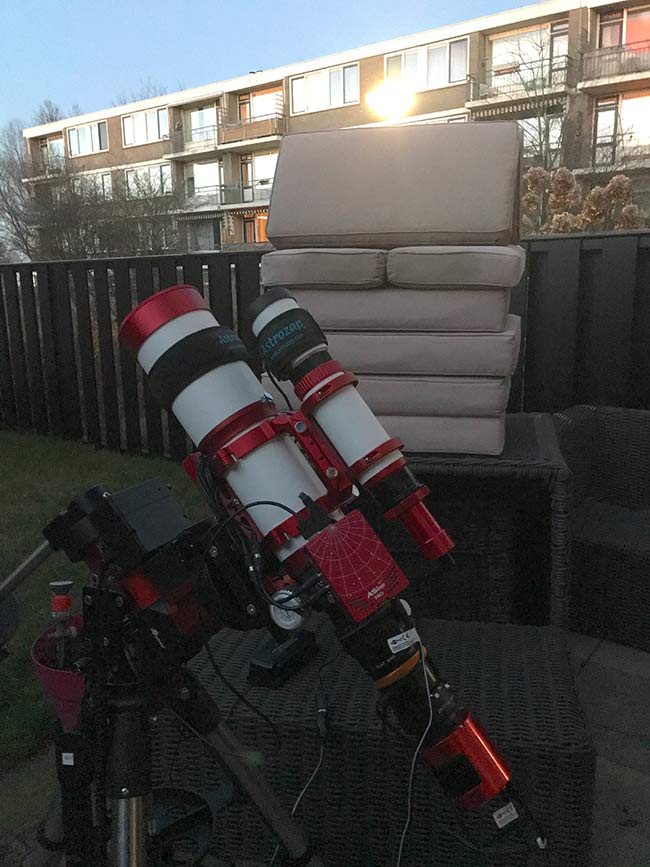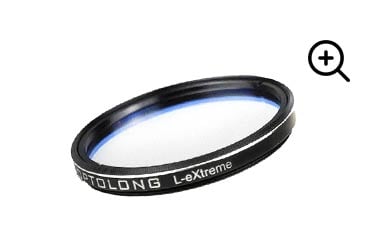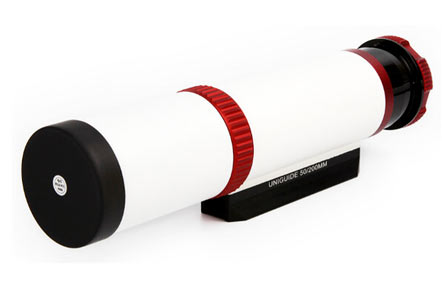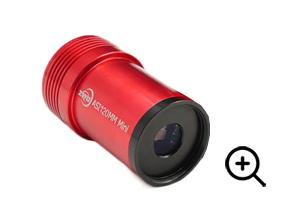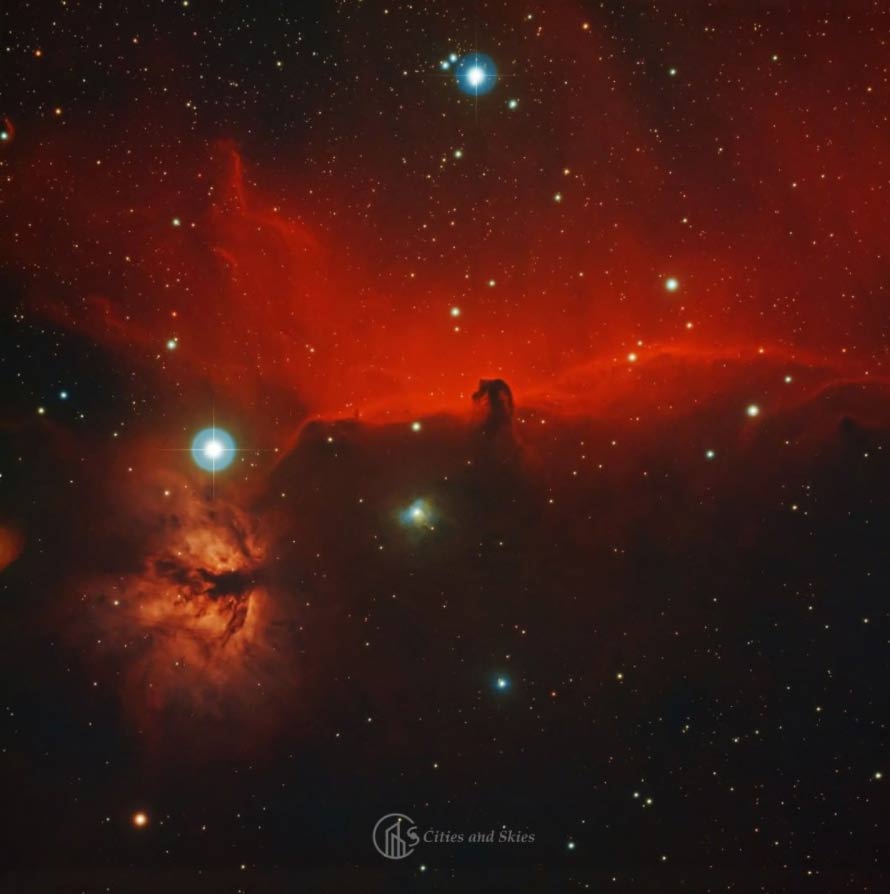Backyard of the Week | August 16, 2021
The AstroBackyard Backyard of the Week highlights astrophotography setups from around the world. A “backyard” can be a balcony, driveway, garden, or wherever else you set up astrophotography equipment at home.
By taking a behind-the-scenes look at the equipment amateur astrophotographers use to take deep-sky images, you can get a better understanding of the process.
This week’s backyard astrophotography equipment profile comes to us from Beata Budai & Zsolt Paragi in the Netherlands.
Location: Hoogeveen, Netherlands
Beata and Zsolt
Beata and Zsolt (City and Skies) have taken some incredible astrophotography images with their deep-sky imaging setup. Not everyone has a knack for image processing out of the gate, but that seems to be the case for these two.
I was delighted to see an in-depth description of their equipment included in the Backyard of the Week form, including their likes and dislikes of the system.
The Rosette Nebula by Cities and Skies
Beata and Zsolt’s Equipment
| Primary Imaging Camera | ZWO ASI533MC Pro |
| Primary Imaging Telescope | William Optics GT81 |
| Telescope Mount | iOptron CEM40 |
| Filters | Optolong L-Pro + Optolong L-eXtreme |
| Guide Scope | William Optics 50mm |
| Guide Camera | ZWO ASI120mm |
What do they love most about their gear?
“This is an excellent config to enter the real world of astrophotography (after a few months of experiencing with an unmodded Canon 600D on a mechanical mount). This is a beautiful rig and everything works like a charm.
We are most pleased with the mount that is very robust, but I can still move around the whole thing.
The camera is a perfect fit with the right pixel size. Its extremely low noise and no amp glow means that we could focus on learning all other aspects of astrophotography and not worry (for now) about bias, dark and flat frames, and still make wonderful photos.
Focusing is super easy with the Bahtinov mask. Polar alignment is a joy with the ASIair unit. We start the autorun session and go watch TV or do other stuff! We are perfectly happy with the quality of our equipment and the images we make.
The one-shot-color camera is ideal for the weather conditions we have here – multiple clear nights are rare to shoot (Halpha) LRGB sequences and integrate a long time.
The focal ratio is f/4.7 which is great, but we still like to integrate 5-10 hours per target minimum, if possible. Of course in the future, we would like to try sensitive monochrome cameras with a larger field of view.
The only thing we would not mind swapping right now is the L-eXtreme filter. If we had known how strong halos it produces around bright stars, we would have probably gone for the L-eNhance, or something similar.”
Beata and Zsolt’s telescope, camera, guide scope, and camera
The Camera
The ZWO ASI533MC Pro is one of the best possible camera choices for those looking to upgrade from a DSLR camera to a dedicated astronomy camera. In fact, that is exactly what Beata and Zsolt did.
Although it has a much smaller sensor (1″ square) than a comparably large APS-C sensor you’d find in a DSLR, this one is back-illuminated, cooled, and astro-modified.
A dedicated astronomy camera allows you to shoot longer sub-exposures without having thermal noise take over the image. I had the opportunity to test the ZWO ASI533MC Pro back in 2019, and I continue to use it for certain deep-sky projects to this day.

The pixel size, resolution, and dynamic range of the 533MC Pro are a great match for Beata and Zsolt’s telescope. Here’s an example of the field of view you can expect to achieve using this sensor paired with a mid-range focal length telescope:
The North America Nebula by Cities and Skies
The Filter
Beata and Zsolt use a popular combination of filters to capture images in broadband RGB, and multi-bandpass narrowband. The Optolong L-Pro is perfect for true-color images under a light-polluted sky, while the L-eXtreme is best suited for emission nebulae projects under a bright city sky or even a full moon.
Optolong L-eXtreme
The Telescope
The William Optics Gran Turismo 81 is quite the imaging telescope. This triplet apochromatic refractor features FPL-53 glass, a built-in Bahtinov mask in the lens cap, a carry handle/guide scope mount, and a built-in rotator.
It’s a beautiful package from William Optics, and there have been several iterations of the Gran Turismo GT refractors over the years. You will need to invest in the Flat 6A III for edge-to-edge correction with a full-frame camera sensor.
William Optics GT81
William Optics GT81 APO
- Type: Refractor
- Diameter: 81 mm
- Focal Length: 478 mm
- Focal Ratio: f/5.9
- Field Flattener: 6AIII 0.8x
- Weight: 8.4 lbs (3.84 kg)
The Telescope Mount
I was excited about the iOptron CEM40 center-balanced equatorial telescope mount when it came out because it hits the sweet spot in the intermediate-level mount category.
The iOptron CEM60 was a personal favorite of mine for years, and the CEM40 borrows everything great about that mount in a more manageable package.
iOptron CEM40
This computerized telescope mount includes a built-in iOptron iPolar alignment camera, and an internal cable management system. The CEM40 weighs only 16 pounds, yet can handle an impressive 40-pounds of astrophotography gear.
The Guide Scope
William Optics refractors often include a carry-handle that doubles as a guide scope saddle. This presents a convenient spot to mount a William Optics Uniguide 50mm guide scope to begin autoguiding your telescope mount.
This guide scope has a focal length of 200mm at F/4, providing an adequate field of stars to improve the tracking performance of your telescope mount via guide camera.
William Optics UniGuide 50mm Guide Scope.
The Guide Camera
The autoguiding system would not be complete without a reliable guide camera, and in Beata and Zsolt’s case, it’s the ZWO ASI120MM Mini.
The ASI120MM Mini includes a tiny 1280 x 968-pixel monochrome sensor, which is sensitive enough to reveal and lock on to a guide star for successful autoguiding.
ZWO ASI120MM Mini.
The Horsehead Nebula and Flame Nebula by Cities and Skies.
Thank you for sharing your backyard astrophotography set up with us, Beata and Zsolt! You can view their astrophotography on Instagram.
Be sure to fill out the form to submit your backyard for a chance to be featured, and don’t forget to include your Instagram handle to help grow your following.
View the Backyard of the Week Archives
